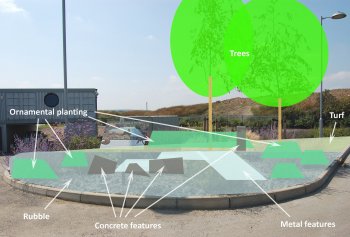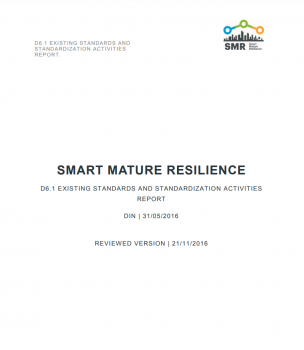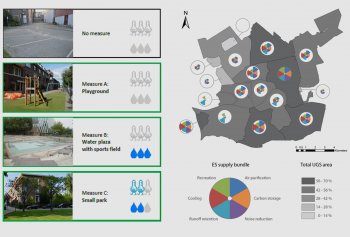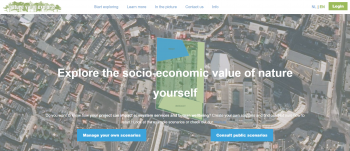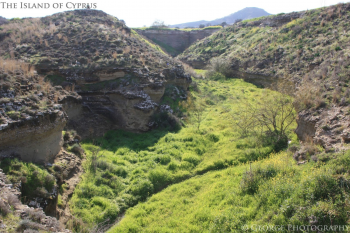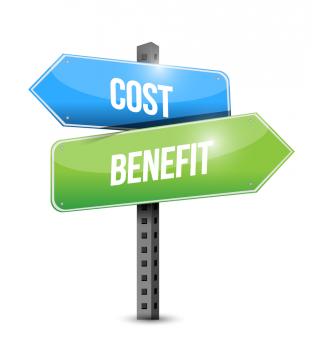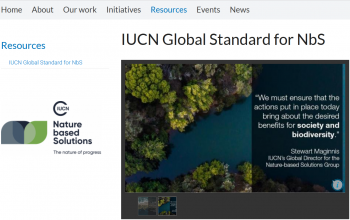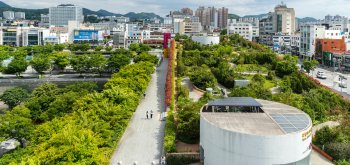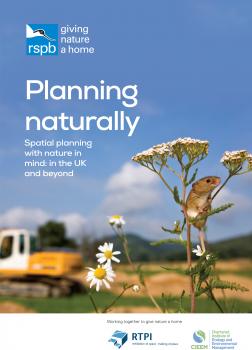- Document
Overview of policy instruments enabling restorative nature-based solutions with business case examples (D3.6)
The report summarises each city’s findings in task 3.5 in a guidance document, categorizing relevant types of policy instruments for private investment and illustrating these with business case examples.
ECOMIMICRY (TURAS)
Innovative landscape design recommendations for maximising the biodiversity value of multi-functional urban green infrastructure (UGI) - designing with regional context
Barriers to ecological restoration in Europe: expert perspectives
Ecological restoration is key to counteracting anthropogenic degradation of biodiversity and to reducing disaster risk. However, there is limited knowledge of barriers hindering the wider implementation of restoration practices, despite high-level political priority to halt the loss of biodiversity
Challenges and enablers to financing Nature-based Solutions in Europe
Raising knowledge and awareness about alternative financing and business models for large-scale implementation of Nature-based Solutions (NbS) in European cities has been one of the major impacts of Horizon 2020 project Connecting Nature. The cities of Genk (BE), Glasgow (UK) and Poznan (PL) are
CHILDREN’S URBAN NATURE LAB IN VUORES
In April, a children’s urban nature lab was organised in Vuores, inviting children from day care centres, preschools and primary schools to participate in the development of nature-based systems in Vuores. The children learned about the role of basins and wetlands in water purification, the plants
EXISTING STANDARDS AND STANDARDIZATION ACTIVITIES REPORT
The aim of this report is to disseminate knowledge about relevant existing standards and standardization activities amongst project partners and to support the awareness raising of possible missing standards. Thus this document will show the current resilience and Smart City standardization
Pitching Green Infrastructure
Methodology for assessing urban green infrastructure and planning for ecosystem services.
Nature Value Explorer
www.natuurwaardeverkenner.be The Flemish government recognises the importance of these ecosystem services (ESS). The manual and easy to apply tool uses pragmatic methods to value ecosystem services in rural and urban environments. The tool helps everyone (land managers, planners, national and
Community Gains
Online-tool to inspire and link community groups and individuals to resources needed to realise their project ideas.
Deliverable 2 Report on the outcomes of the lessons learned, mapping of emerging experiments and expert workshops, leading to a synthesis of the most promising indicators for nature- based solutions
"This Deliverable presents the Connecting Nature Impact Assessment framework and capacity building process whose aim has been to support the mainstreaming of a culture of impact evaluation and evidence based nature-based solutions (NbS) design and implementation in cities. The framework is the
Economics of Peatlands Conservation, Restoration and Sustainable Management
Less than 3% of the Earth’s surface is covered by peatlands but they are the largest terrestrial organic carbon stock. Indeed, peatlands are capable to store twice as much carbon as in the world’s forests. Despite their potential, globally, peatlands are in decline with 11-15% of these ecosystems
Belgium Ecosystem Services Network BEES
The Belgium Ecosystem Services (BEES) network is a community of practice, which connects research, practice and policy on ecosystem services and related issues by fostering exchange and real-life networking events.
Website - Wikipedia: Nature-based solutions
The Wikipedia entry page for nature-based solutions, that covers basic information on the concept ranging from its origins to present day discourse.
Urban nature: A shared solution to the climate and biodiversity crises?
Cities are increasingly being recognised as key arenas for governing and tackling global environmental challenges, including the interlinked climate and biodiversity crises. Yet urban areas have historically exacerbated these issues. Cities are estimated to account for 60-75% of global GHG
Cost Benefit Analysis (iodine): Land-use typologies for strategic planning
The tool is intended to be used primarily for strategic planning (thinking about different management scenarios), for developing business cases, for reporting impacts, and for supporting instrument design. It is best applied at a broad scale. It is not suited to detailed analysis of short-term or
IUCN Global Standard for NbS
Nature-based Solutions (NbS) are a powerful ally to address societal challenges, such as climate change, biodiversity loss and food security. As the world strives to emerge from the current pandemic and move towards the UN Sustainable Development Goals, it is imperative that future investments in
Biodiversity Quality Calculator - Measuring Impacts on Biodiversity
The Biodiversity Quality Calculator is an online tool currently in development. It aims to provide comprehensive and robust biodiversity indices, including biomass, species rarity and population evenness. We are currently developing an online tool which allows data to be uploaded to the platform,
The Purpose of Nature’s Impact on Human Health Guide
The Nature’s Impact on Human Health Guide is a resource primarily intended for practitioners seeking to evaluate the impact of green interventions on human health to inspire additional investment of time and resources in nature-based solutions to human health challenges. The reasons to do so are
Nature-based solutions State of the art in EU-funded projects
This document summarises outcomes from the EC individual expert reports delivered through its ‘Valorisation of NbS Projects’ initiative. EU research and innovation projects were scanned for results pertaining to key areas such as biodiversity, climate change mitigation and adaptation (including
Planning Naturally. Spatial planning with nature in mind: in the UK and beyond
RSPB, CIEEM and the RTPI have come together to show how planning for biodiversity should be integral to every part of the planning process and to inspire with examples of good practice, whatever country you are working in.The report is structured around 12 principles of good spatial planning, and
- 1 of 43
- next ›

